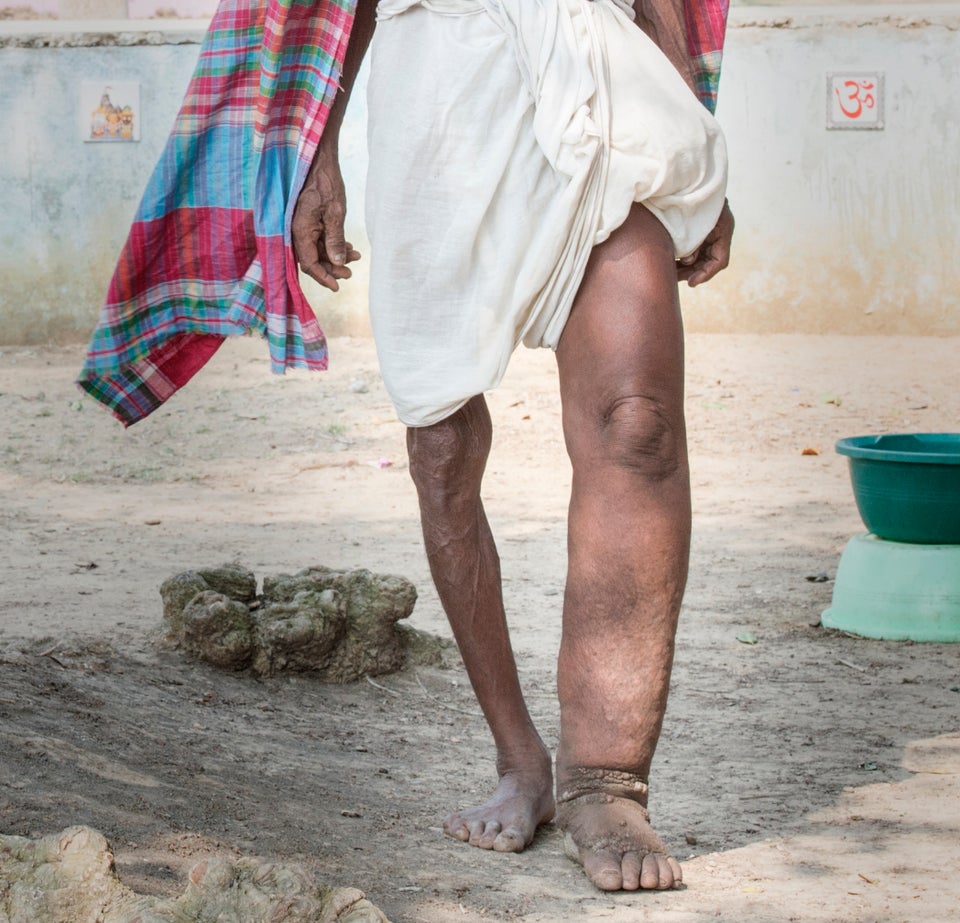This article is part of HuffPost’s Project Zero campaign, a yearlong series on neglected tropical diseases and efforts to fight them.
SALAMBONGO, Congo ― Jetou Mapuani had no idea why the skin on her legs was turning spotted or scaly, only that she could not sleep at night or stop scratching by day. She had no idea what the balloons of flesh popping from her middle, arms and legs meant, but when one started coming out of the top of her head, it felt like her skull was splitting.
Mapuani could only hide what was happening to her with clothes, including a headscarf to cover an eventual avocado-sized growth, and try to carry on looking after the home and farm she shared with her husband in a remote village in the Democratic Republic of Congo.
Mapuani didn’t know it yet, but she had contracted a debilitating disease known as river blindness, which is rampant in Congo but can be difficult to treat effectively here. As she struggled to come to terms with her mysterious deformities and deteriorating eyesight, her husband declared her an unfit wife and their marriage over.
“He said, ‘Like this, you are useless. Go home,’” recalled Mapuani, who is unsure of her age but thinks she is in her 60s.
“He threw me away like I was a dead person,” she said.
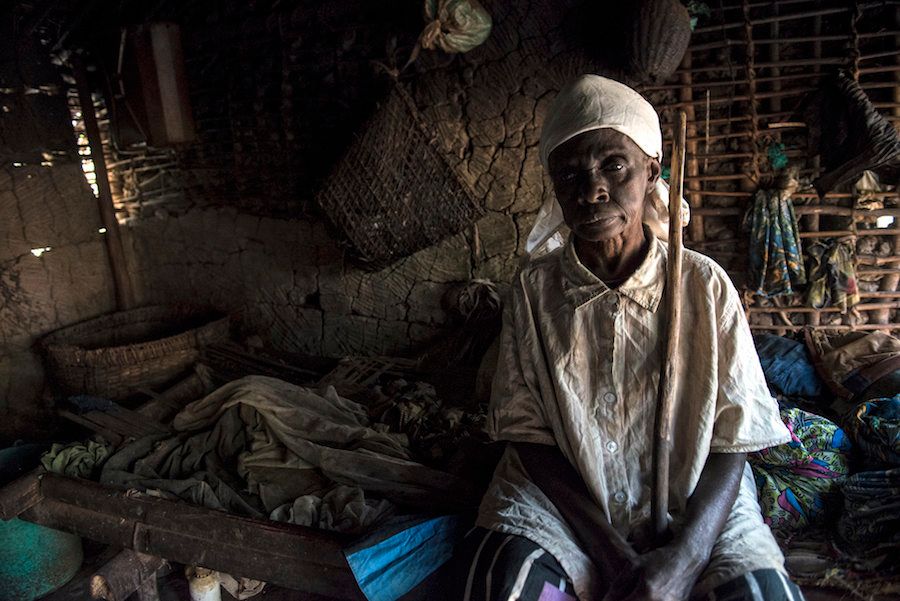
Dr. Naomi Awaca, director of programs against river blindness at the Ministry of Health in Congo’s capital, Kinshasa, has studied the disease since 2005 and knows how it destroys relationships.
“There are no shortage of social problems caused because a partner will no longer accept someone who has gone blind,” she said. “The people who become blind are no longer useful for their community and become a burden for the family.”
“There are also cultural aspects to the abandonments, despite awareness campaigns about the disease,” she added. “Like people will say that witchcraft is involved, or the blind person is a witch and must be thrown out.”
Divorced and destitute, Mapuani had no choice but to leave her husband’s home, as he swiftly moved another woman in.
“When he noticed that something was wrong with me, he went and married another woman,” she said.
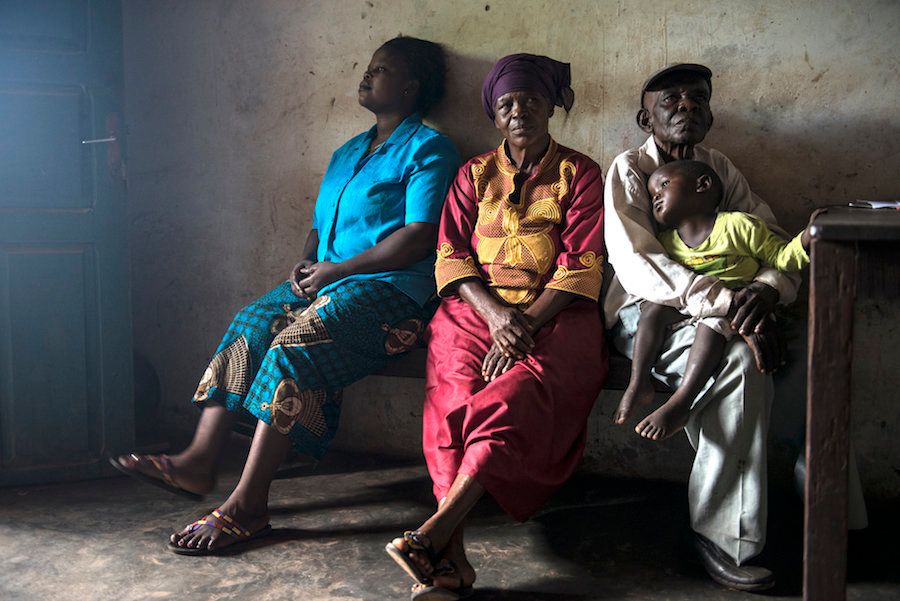
In this area of the Congolese bush, people call what Mapuani was suffering from “suka ya nzela,” meaning “end of the road.” In the medical world, it is called river blindness, or onchocerciasis. The disease is caused by parasites injected by black flies that live near fast-flowing water. About 18 million people around the world have river blindness, according to the World Health Organization, and more than 99 percent of cases are found in Africa. In Congo, 40 million people ― about half the country’s population ― are at risk.
Although river blindness is not fatal, its symptoms strip people of so much vitality that many, like Mapuani, are left hoping and waiting to die.
“I ask God when he will take my soul,” she said. “My heart hurts from having no hope.”
Mapuani’s life has been reduced to sitting inside a stick hut thatched with banana leaves. For the past six years, she has barely left this ramshackle shelter ― which contains only a single bed and the bare essentials ― except to go to the outhouse, a painstaking process that involves feeling her way along the house and up a hill with a stick to an outside toilet.
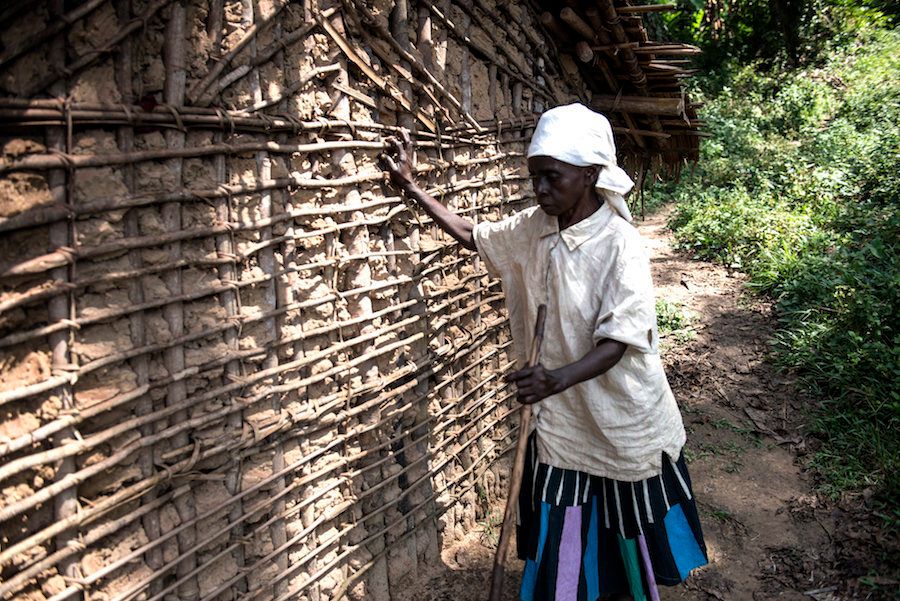
Early signs of river blindness involve extreme itchiness. For some people, this feeling can be so intense that they experience chronic insomnia, or they try to scratch off their skin using flame-heated knives or machetes. In extreme cases, the itching drives people to suicide.
The injected larvae become worms that live in the human body for years and reproduce thousands of times per day. The worms usually hide themselves in the body until they cluster together in nodules that stick out of the skin. Other visible signs involve skin depigmentation on the legs ― called “leopard skin,” due to white spots that appear ― and scaly patches known as “lizard skin.”
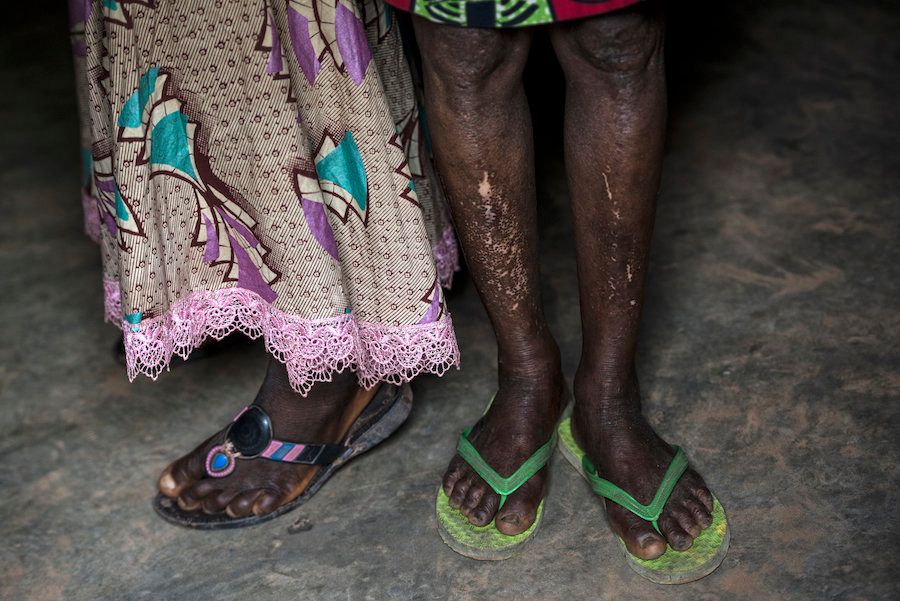
Over time, the disease may affect the eyes, causing loss of vision or irreversible blindness.
When Mapuani describes her loss of sight, she makes a noise that sounds like a gust of wind extinguishing a candle ― “shoo” ― and drops her hands down past her face for emphasis.
Cast from her husband’s home, Mapuani now lives in a tiny, desperately poor village called Salambongo, which means “make money.” She survives on handouts from neighbors and the church. But in a place where so many people have become helpless due to this ravaging disease, the able are overstretched.
“There are days when I eat nothing. I just drink water from morning to evening and go to bed hungry,” she said, holding a pack of donated biscuits tight against her side.
Of the 18 women who gathered to listen as Mapuani told her story to this reporter, half showed river blindness symptoms. Some had nodules that ranged from the size of a pingpong ball to a baseball.
Beyond sleepy Salambongo, home to 1,000 people, are countless Congolese villages facing the same crisis.
“This really is a big public health problem in DRC,” said Awaca, who stresses the huge setback diseases like river blindness have on the working community in a country trying to pull itself out of so much poverty and conflict.
In Salambongo, there are so many black flies, which locals call “pipi,” that people can’t and don’t swat them all away as they spend their days farming, hunting and fishing ― or even during interviews.
The nearest city of Kisangani is more than a four-hour drive in a 4x4 down heavily potholed roads. But even there, people would not find the medicine to treat this disease, and they would first have to manage to get properly diagnosed in a country where health care services and education are lacking.
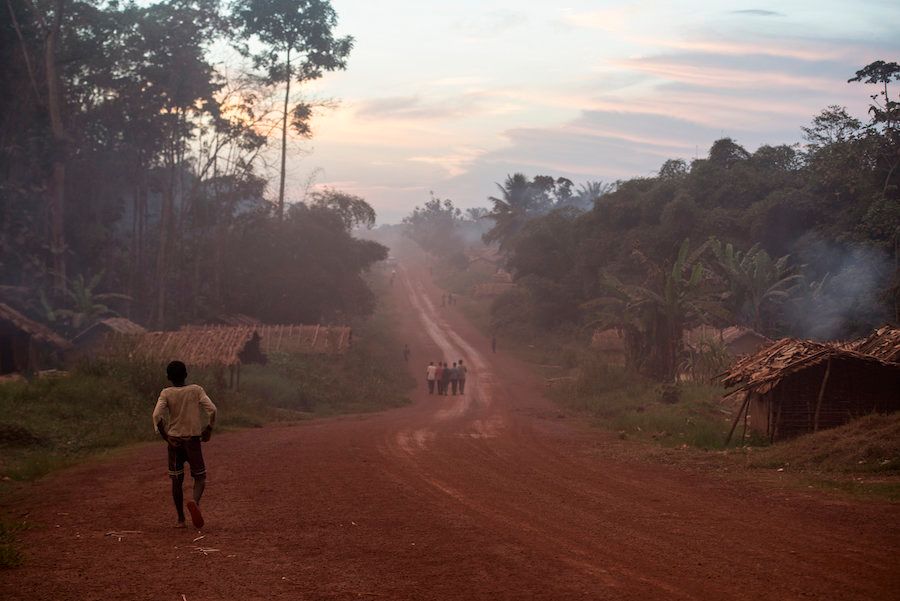
Ivermectin, the drug used to treat river blindness, is not found in shops. A drug manufacturer donates it to the Congo, where a network of volunteers, the ministry of health, and charities distribute it to communities vulnerable to river blindness. Ivermectin is distributed with caution because it can be dangerous, even deadly, for people to take if they’re also infected with eye worm, another parasitic disease found in some rainforest areas in Central and West Africa.
In Congo, mass distributions of ivermectin started in 2003 but were put on hold for a few years in some areas and halted in others after some deaths caused widespread rumors and mistrust that still persist today.
For the vast majority of river blindness patients, however, ivermectin is a safe and effective medication that prevents blindness and reduces transmission of the disease. It has been taken successfully by tens of millions of people in Africa and Latin America and helped Colombia, Ecuador, Mexico and Guatemala eliminate river blindness within their borders. The drug is also used to treat many other diseases caused by roundworm parasites. In fact, ivermectin’s inventors, Irish scientist William Campbell and Japanese scientist Satoshi Omura, won a Nobel Prize in 2015 for this compound.
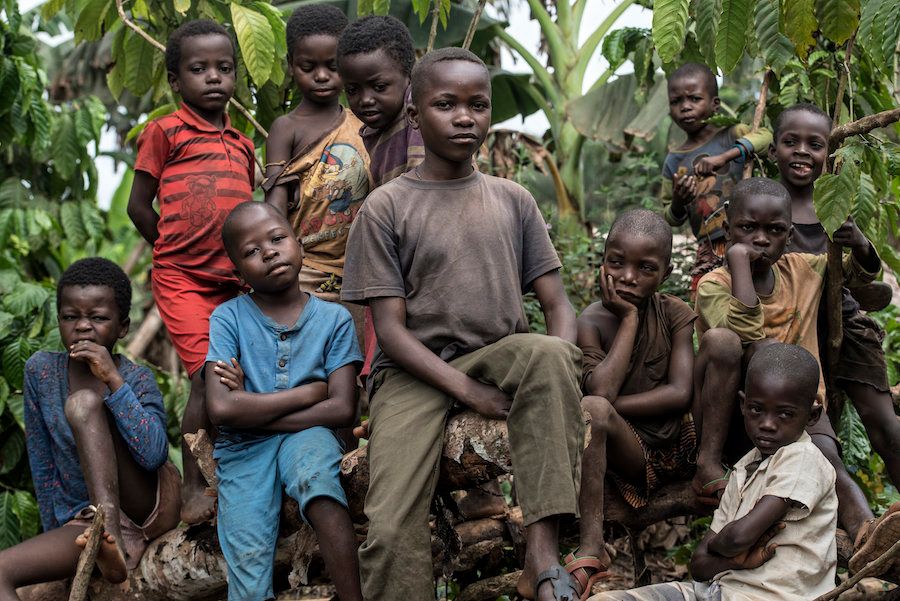
“The people who take ivermectin every year, they really feel a benefit, because it prevents blindness, they have less itching,” said Belén Pedrique, who works for the Drugs for Neglected Diseases Initiative, a nonprofit that aims to improve treatment for river blindness and other diseases around the world, including in Congo.
“But many people are complaining that after six months, they get the itching,” Pedrique added.
This is because the drug kills off only the baby worms, called microfilariae. It doesn’t kill the adult worms, and it doesn’t totally stop females from producing new microfilariae, though it does reduce their production for a few months. It’s the microfilariae, not the adults, that are actually responsible for the worst damage from the disease ― the itching, the disfigurement and the blindness. So the drug must be taken at least once a year for 15-17 years, until the mature worms die off on their own.
However, unlike other countries in the region or in Latin America, Congo lacks the funds to deliver mass treatments on a yearly basis. At two-thirds the size of western Europe, this nation has few reliable roads and is veined by plenty of swift rivers, where black flies breed.
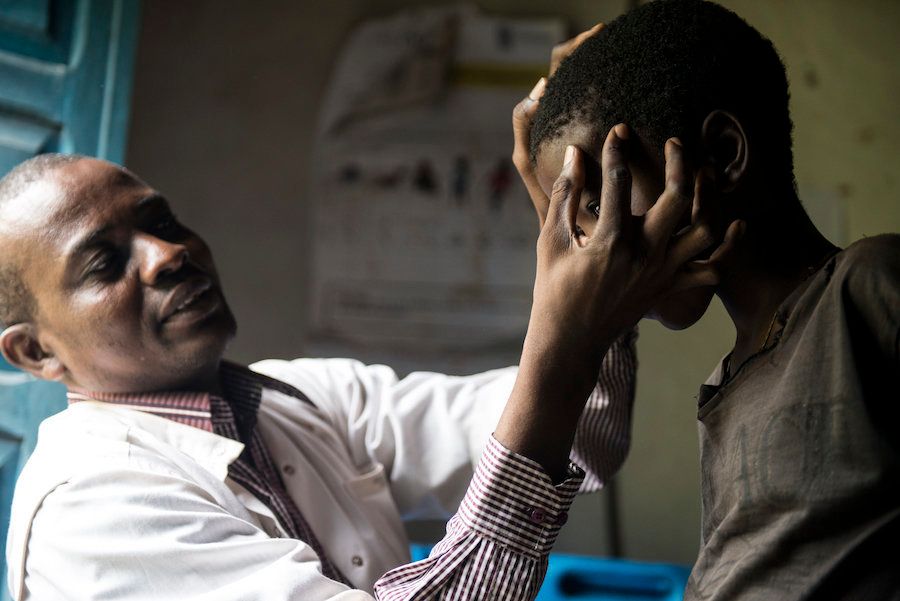
Awaca estimates that mass drug distributions reach around 80 percent of the affected areas in Congo, and 30 million people receive treatment with ivermectin. But community volunteers who go door to door offering the deworming drug say many people refuse to take it.
“When we see the figures it’s about 60 percent who refuse, categorically, to take it,” said volunteer Angel Mozenge, who lives in the village of Uma, about an hour’s drive from Salambongo, and has distributed ivermectin since 2009.
“Some people think that if they take the medicines, they’ll die or get nodules,” said Jean Basingi, another local volunteer.
Mapuani, like many others in her village, hasn’t taken the drug, which could help reduce the worms in her body but would not be able to bring back her sight.
Down at the main river clearing in Salambongo, the black flies swarm around Regine Bora as she washes her clothes. She finds them a nuisance but doesn’t associate them with river blindness. She blames that on ivermectin.
“I don’t take these pills because they give you the vimba vimba,” she said, using the local word for nodules.
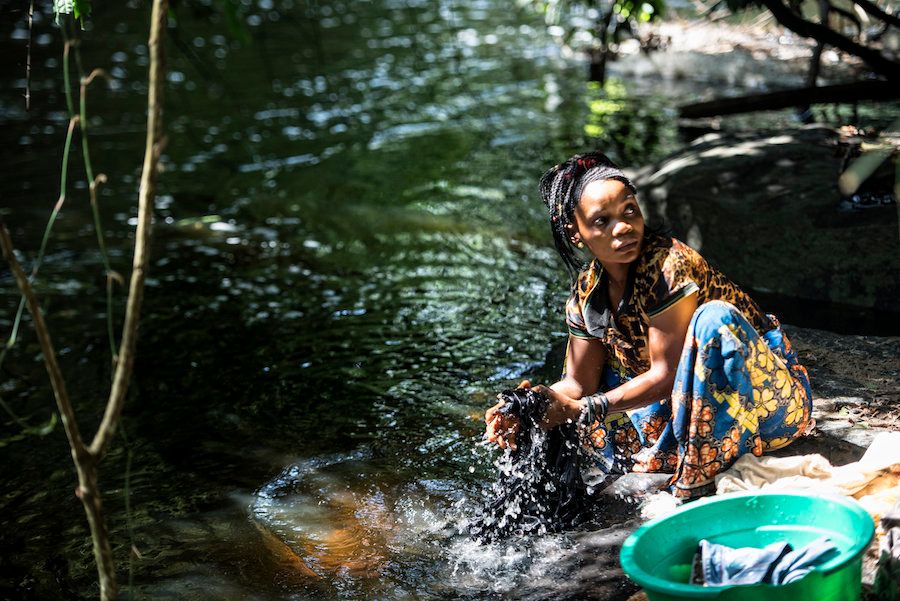
Health workers who have watched this disease cripple communities for decades are now hoping new medications will arrive on the scene.
“It would be helpful to have more effective drugs, because maybe we could cut the number of years, if we had a drug that was more effective with the adult worms, or if we can keep the microfilariae away for longer we would need less rounds and retain the patient for less time,” Pedrique said.
DNDi is working with pharmaceutical giant Bayer to develop a drug used to deworm animals to see if it could kill adult worms in people infected by river blindness.
It will do little to help people like Mapuani, but could prevent half of the women around her ― who have either missed or ignored the ivermectin rounds ― from being plunged into the same darkness and despair.
“Sometimes I cry all night,” Mapuani said. “Sometimes from suffering, sometimes from hunger and sometimes from poverty.”
Language has been changed to more accurately reflect the manufacture of ivermectin and its distribution in the Congo.
DNDi is a recipient of grants from the Bill & Melinda Gates Foundation, which also funds HuffPost’s Project Zero series. All content in this series is editorially independent, with no influence or input from the foundation.
If you’d like to contribute a post to the series, send an email to ProjectZero@huffingtonpost.com. And follow the conversation on social media by using the hashtag #ProjectZero.

